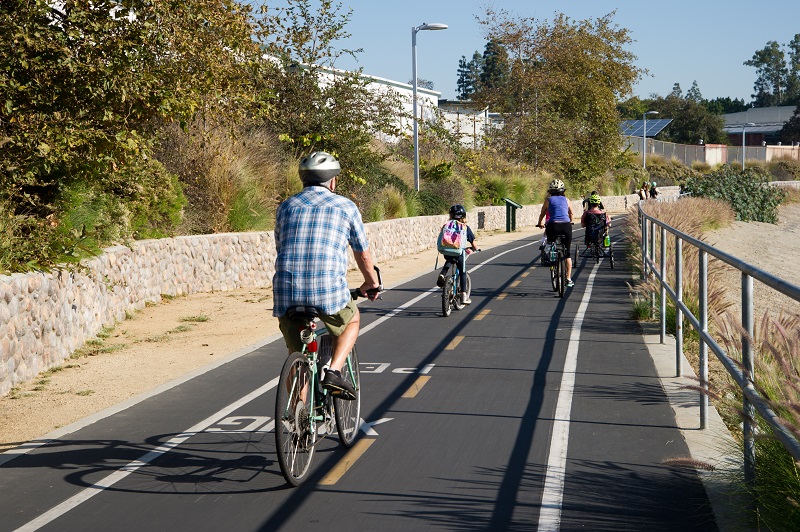
In the first two months of the new Congress, one key issue making news is climate change.
The transportation sector is the largest contributor to greenhouse gas emissions, making up 28.5 percent of all emissions. Emissions from transportation have been increasing primarily due to people driving more and driving larger vehicles that are less fuel efficient. Often, emission reduction solutions focus on things like electrifying cars and transit or shifting to zero-emissions trucks.
However, focusing on vehicles alone misses the opportunity to reduce the miles that people drive through creating safe and more widespread options for biking and walking. Preliminary results from the 2017 National Household Transportation Survey show that 21.4 percent of all trips people take are less than one mile and 45.6 percent of trips are less than three miles—which are easy lengths to bike and walk, if people feel comfortable and safe doing so.
In February, Sen. Edward Markey (D-MA) and Rep. Alexandria Ocasio-Cortez (D-NY) introduced a joint resolution on the Green New Deal. It is a nonbinding resolution that calls for significant changes across society to achieve net-zero greenhouse gas emissions. Looking specifically only at the transportation aspects, the Green New Deal resolution calls for any infrastructure bill to address climate, and to increase investments in public transit, high speed rail, and zero emission vehicles. While these are worthy goals, it unfortunately does not mention biking and walking. Public transit works better when people can walk and bike to their nearest transit stop. And as previously mentioned, nearly half of all trips are short and could be easily replaced by foot or bike.
The House Transportation & Infrastructure Committee held a hearing on February 26 to look at how infrastructure could address climate change. A number of witnesses presented a wide array of ideas and examples. Dr. Daniel Sperling of the California Air Resources Board called for increasing “passenger miles” while decreasing vehicle miles through providing more transportation options (including biking and walking) and adding dedicated lanes for bikes and scooters. Kevin DeGood of the Center for American Progress encouraged the federal government to look at land use to prioritize increased density.
The questions put to the witnesses by members of Congress revealed the deep divisions between most Democrats and Republicans on climate change. Most Democrats queried witnesses about the most effective ways to reduce greenhouse gas emissions from transportation, while many Republicans challenged the science behind climate change, focused on industries voluntarily reducing emissions, and the potential harm to jobs and the economy through more regulations and restrictions.
Clearly, there will be no easy solutions for Congress moving forward. But we will continue to make the case that making biking and walking safer and more accessible is a solution that helps the climate – while also providing low-cost mobility options that are good for your health!

